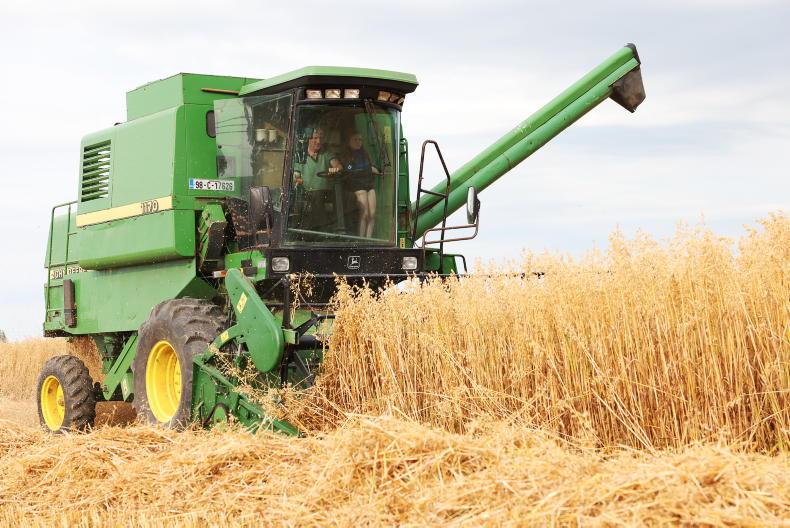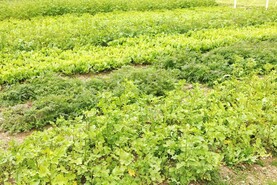Harvest: Harvest went very well for many people over the last week. The dry weather made the job easier in many ways. Moisture contents dropped dramatically and there were weight loss issues for some.
There are still winter barley crops to cut and many people have made a big dent in their oat crops. Some oats were not fit to cut, but will be nearly ready when the weather turns again.
Straw will be a priority to pick up for those with crops on the ground. Straw yields are not super so, make sure you are charging an appropriate price for it.
Take-all: Take-all looks to have been a big issue this season according to reports from agronomists. In some crops the disease was very evident all year.
There were large patches which failed to grow properly, were stunted and the crop died well ahead of harvest.
However, in some crops the disease was less pronounced and the disease can currently be seen in some winter wheat crops at present.
You can still examine barley stubbles or dig up some winter wheat roots where you think take-all has been an issue this year. If the roots are black or the stubbles are black and the crop did not tiller or looked stunted in these areas during the year then it is probably take-all.
Next season you might plant a break crop, a spring crop, delay winter sowing or use a seed dressing on winter wheat or early-sown winter barley. A well-fed crop will fight take-all better so check your soil test results.
Catch crops: Catch crops or cover crops usually perform best when planted as early as possible and while the dry ground is a concern, the rain the last few days will be a help to any catch crops being planted.
The sooner you plant the better yield you will have for animals, the bigger roots and plants you will have to help soil structure and health and the more nutrients you will take up.
On this week’s tillage pages we detail sowing rates, the different crops and mixes that can be grown and the dates they need to be planted by for different schemes.
Remember to leave the correct buffers and a lie-back area of 30% of the area if you plan to graze these crops. The nearest deadline is the catch crop planted before winter crops in the Farming for Water project. These crops need to be in by 1 August.
Spring crops: While the rain is preventing harvest of winter crops for many it will be welcomed by many with spring crops as it might help to slow them down. Some have been knocked, particularly late-sown crops.
Spring barley was suffering in the heat over the last week or more and coming in very fast. Some crops may be cut before the end of July, which does not bode well for yield, but the combine will be the only thing to decide that.
Walk spring crops this week, while the rain prevents other work and see how disease programmes worked and pick any wild oats or grass weeds where needed.






 This is a subscriber-only article
This is a subscriber-only article










SHARING OPTIONS: